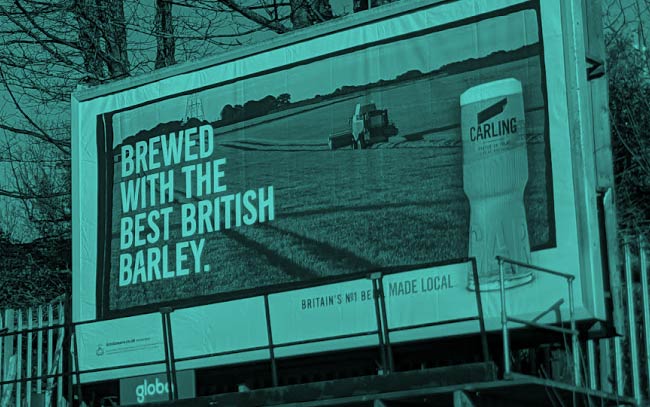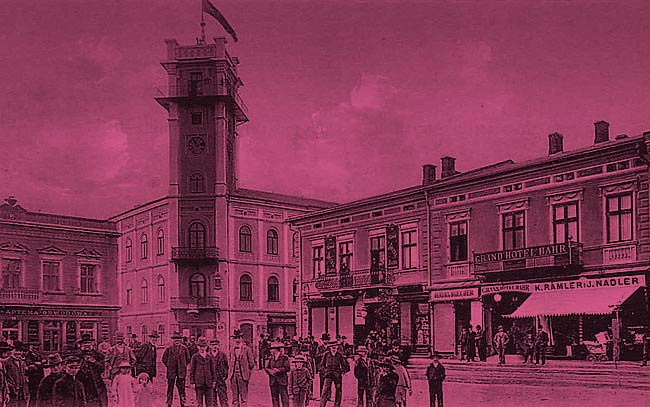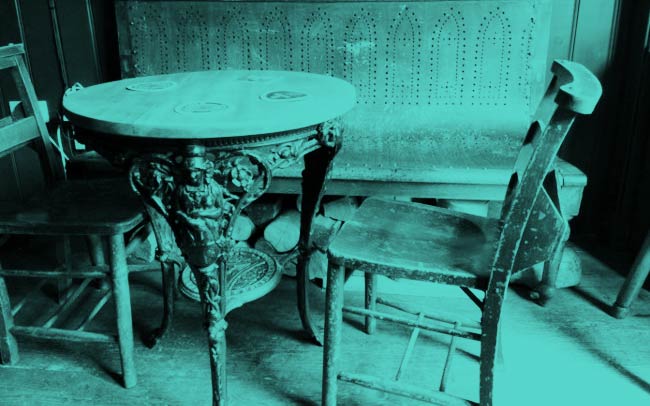Visit the Boak and Bailey's Beer Blog site
Here’s our regular weekly round-up of writing about beer and pubs, featuring Norman knights and cold cans in New Orleans.
Let’s start with Martyn Cornell and his notes on ‘How to brew like a medieval knight’. His dissection of a 13th century “rhyming treatise… in the Norman French of the 1200s” is fascinating, illuminating stuff:
Going through the process, the would-be brewster looking to turn orge (barley) into “cerveyse” first had to steep* her barley in a large vat. When it was soaked and the “eauwe” drained off, she was to carry the grain to a clean-swept “soler” or upper floor and “la coucherez” until it had properly germinated: it should now be called “breez”, or “malt”, and not “grain”, Bibbesworth said. The malt should be stirred by hand, and left to stand in “heaps or rows”, an essential practice to stop the grain over-heating as it sprouted and to ensure the growing sprouts and rootlets did not get so tangled the malt turned into an unseparatable lump.
 For Pellicle Adrian TIerney-Jones has written about smoke and the mysterious, primal edge it brings to beer:
For Pellicle Adrian TIerney-Jones has written about smoke and the mysterious, primal edge it brings to beer:
Back in spring 2018, I visited Bamberg and Schlenkerla’s home Brauerei Heller… Inside the yard and the brewery, the aroma of smoke hung in the air like a company of ringwraiths from Lord of the Rings, while a tasting of the beers with a brewer took me on a journey through the various rich levels of smoked beer. Every beer it produces has its own character, with the 8% Double Bock, Eiche, being particularly luscious in its smokiness, coming from the use of oak in malting as opposed to beechwood… Later at the Schlenkerla tavern, amongst the vaulted arches and the time-scrawled, brown wooden panelling, amidst a soundtrack of chatty, beery, slurping, masticating people and the warm fog of roast meat, I finally felt I had reached the heart of smoked beer.*
 After a few weeks of intense debate over questions of independence in beer it’s no surprise to find Lily Waite writing about “craft beer’s self-inflicted existential crisis” for Good Beer Hunting:
After a few weeks of intense debate over questions of independence in beer it’s no surprise to find Lily Waite writing about “craft beer’s self-inflicted existential crisis” for Good Beer Hunting:
Since I began working in the industry in 2015, the idea that “Big Beer” was the enemy prevailed. Craft beer forums would censor discussion of any beers available for purchase in supermarkets; breweries who “sold out” to Heineken, Anheuser-Busch InBev, Kirin, or any other “macro brewery” would become taboo; and I, like many of my peers, would ardently avoid drinking anything but “craft” beer. The idea of the shadowy, underhanded Big Beer operative lurking around every corner, desperate to snatch back the sliver of market share stolen by independent beer, permeated the spaces I inhabited. “Fuck Big Beer!” was the message, and we were its evangelists… But what’s the most serious challenge—the conglomerate of multinationals collectively known as “Big Beer,” or craft beer’s own flaws?*
(As we’ve been saying since 2014, craft beer isn’t necessarily better but is often more interesting; and we understand why people get upset when independence has been presented as important up until the moment it isn’t.)
 Gary Gillman continues to explore what feels like a fruitful and barely-trodden avenue: Jewish-owned breweries in Eastern Europe. This week, he’s been getting to know the Brettler Brewery of Old Kolomyja, Galicia:
Gary Gillman continues to explore what feels like a fruitful and barely-trodden avenue: Jewish-owned breweries in Eastern Europe. This week, he’s been getting to know the Brettler Brewery of Old Kolomyja, Galicia:
Kolomyja had a very substantial Jewish population before WW II, half or nearing that level since the mid-1800s… Most Jews were craftsmen, e.g. cobblers, tailors, and potters, or factory workers, peddlers, or shop-owners, with small, often unpredictable incomes… A small percentage did become wealthy. They helped their compatriots by giving employment, creating loan societies, and funding social and religious causes. This was a vital assist before the era of governmental supports, although continual labour agitation suggests working conditions were dreary… The Brettlers were in the well-off group, with interests in grain milling among other enterprises… Litman Brettler was an estate lessee. His son Jakub Brettler, described in the Memorial Book as a millionaire, founded the brewery in 1890.
 Jess has been reading the New Statesman since she was a kid and rolling her eyes at Nicholas Lezard’s regular column since it began. His recent thoughts on pubs, however, did hit home:
Jess has been reading the New Statesman since she was a kid and rolling her eyes at Nicholas Lezard’s regular column since it began. His recent thoughts on pubs, however, did hit home:
Everyone keeps asking me if I’ve gone to the pub yet. “Have you gone to the pub yet?” they ask. No, I reply, I have not gone to the pub yet… Except it is more than that. When people ask me if I’ve returned to the pub, I feel as if they’re asking a vicar if she’s gone back to church yet, or a passionate football fan if they’ve seen a match yet… But there is a terrible price to pay for loving the pub, and that is the price of going to the pub. Prices vary wildly up and down the country, but in London and the south in general they are eye-watering…
 Reader Nick Cowley sent us a link to this story about a Miller Lite super-loyalist by Doug MacCash. We were ready to dismiss it as a bit of sly brewery PR but couldn’t resist this description of New Orleans artist Lance Vargas’s considered opinion on the matter:
Reader Nick Cowley sent us a link to this story about a Miller Lite super-loyalist by Doug MacCash. We were ready to dismiss it as a bit of sly brewery PR but couldn’t resist this description of New Orleans artist Lance Vargas’s considered opinion on the matter:
According to Vargas, there is only one brew that is perfectly compatible with the Crescent City’s climate and cultural milieu, and that beer is Miller Lite. Vargas could have also slaked his thirst with Miller Lite in 16 or 24-ounce cans, but that too was out of the question… As he explained it, the great virtue of Miller Lite is that its ethanol content is such that one “can go all day,” sipping from one 12-ounce can after another, without undue fatigue. To attempt to switch to another size could “ruin your cadence,” he warned, resulting in unpredictable, possibly undesirable effects. It wasn’t something he was willing to risk.
Cadence! What an interesting idea. One of the problems with drinking in rounds is how easy it can be to lose your own rhythm.
Finally, from Twitter, there’s this:
"We need a slogan, in English, that makes spontaneous fermentation appealing to a modern audience and absolutely doesn't suggest farting."
"No problem!"
pic.twitter.com/Irc9mPxTOM
— The Beer Nut (@thebeernut)
April 24, 2021
For more good reading check out Alan McLeod’s round-up from Thursday.
News, nuggets and longreads 1 May 2021: Cerveise, craft, cadence originally posted at Boak & Bailey's Beer Blog
More...
For Pellicle Adrian TIerney-Jones has written about smoke and the mysterious, primal edge it brings to beer:
After a few weeks of intense debate over questions of independence in beer it’s no surprise to find Lily Waite writing about “craft beer’s self-inflicted existential crisis” for Good Beer Hunting:
Gary Gillman continues to explore what feels like a fruitful and barely-trodden avenue: Jewish-owned breweries in Eastern Europe. This week, he’s been getting to know the Brettler Brewery of Old Kolomyja, Galicia:
Jess has been reading the New Statesman since she was a kid and rolling her eyes at Nicholas Lezard’s regular column since it began. His recent thoughts on pubs, however, did hit home:
Reader Nick Cowley sent us a link to this story about a Miller Lite super-loyalist by Doug MacCash. We were ready to dismiss it as a bit of sly brewery PR but couldn’t resist this description of New Orleans artist Lance Vargas’s considered opinion on the matter:




 Reply With Quote
Reply With Quote